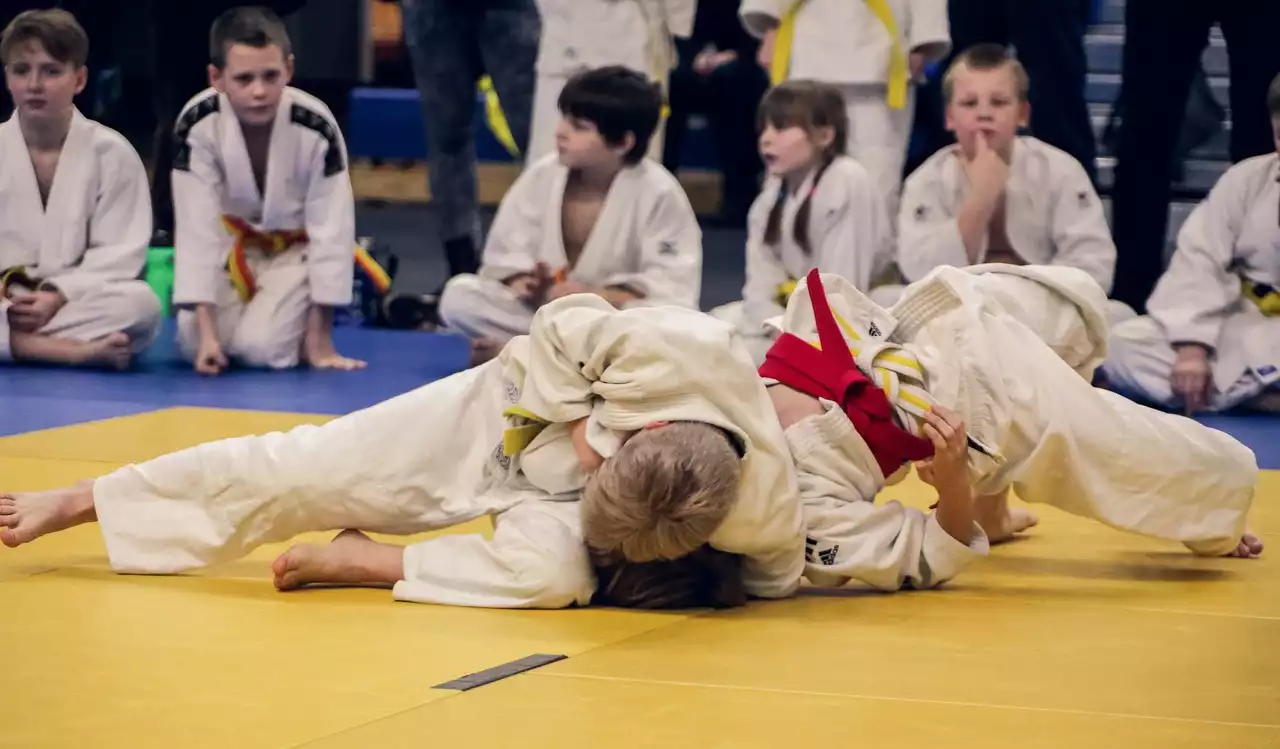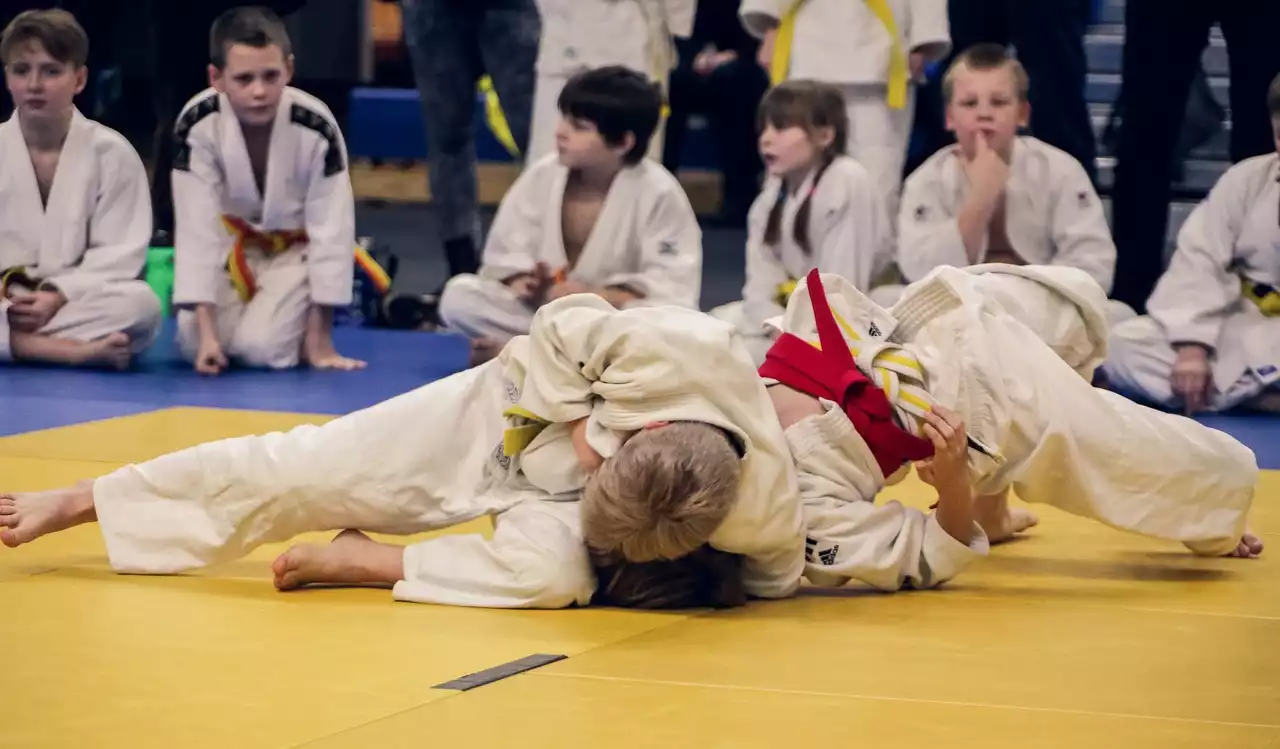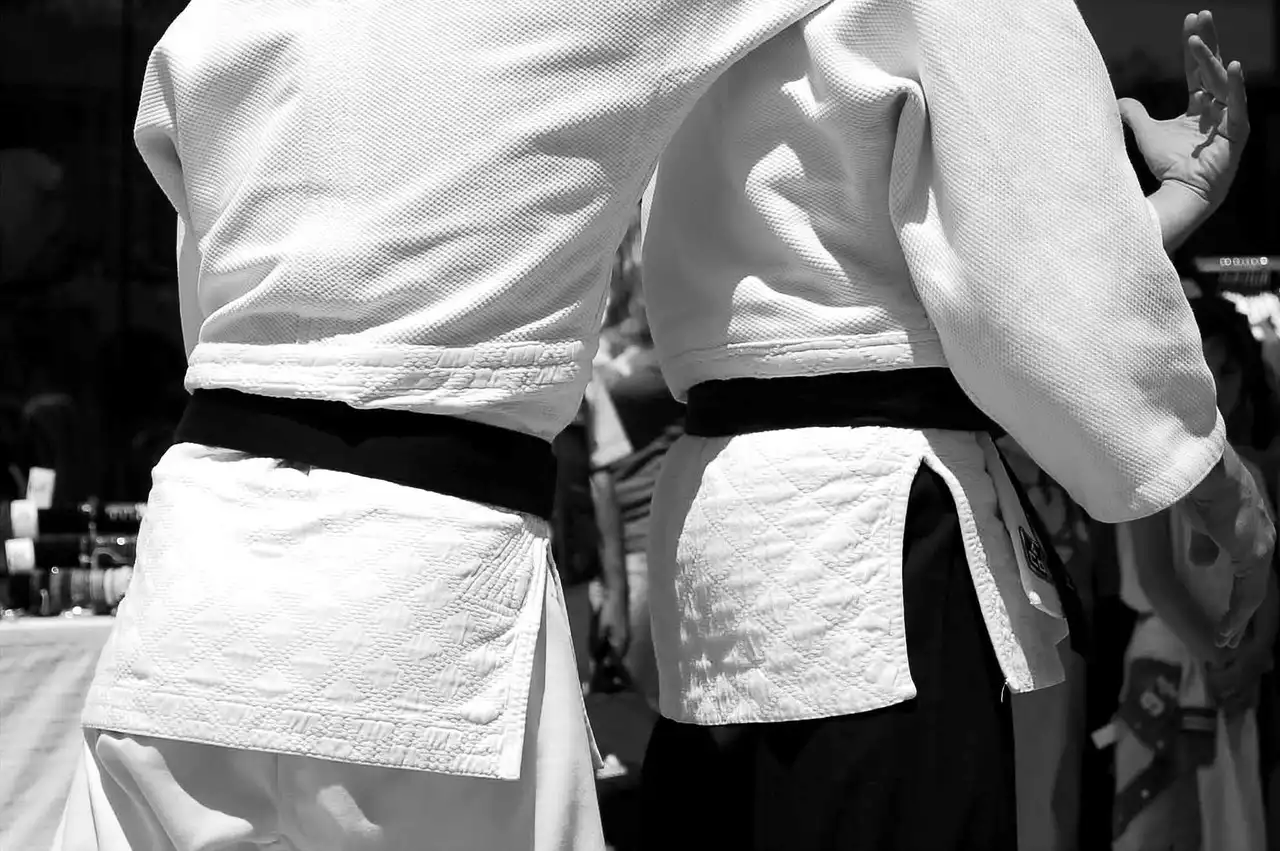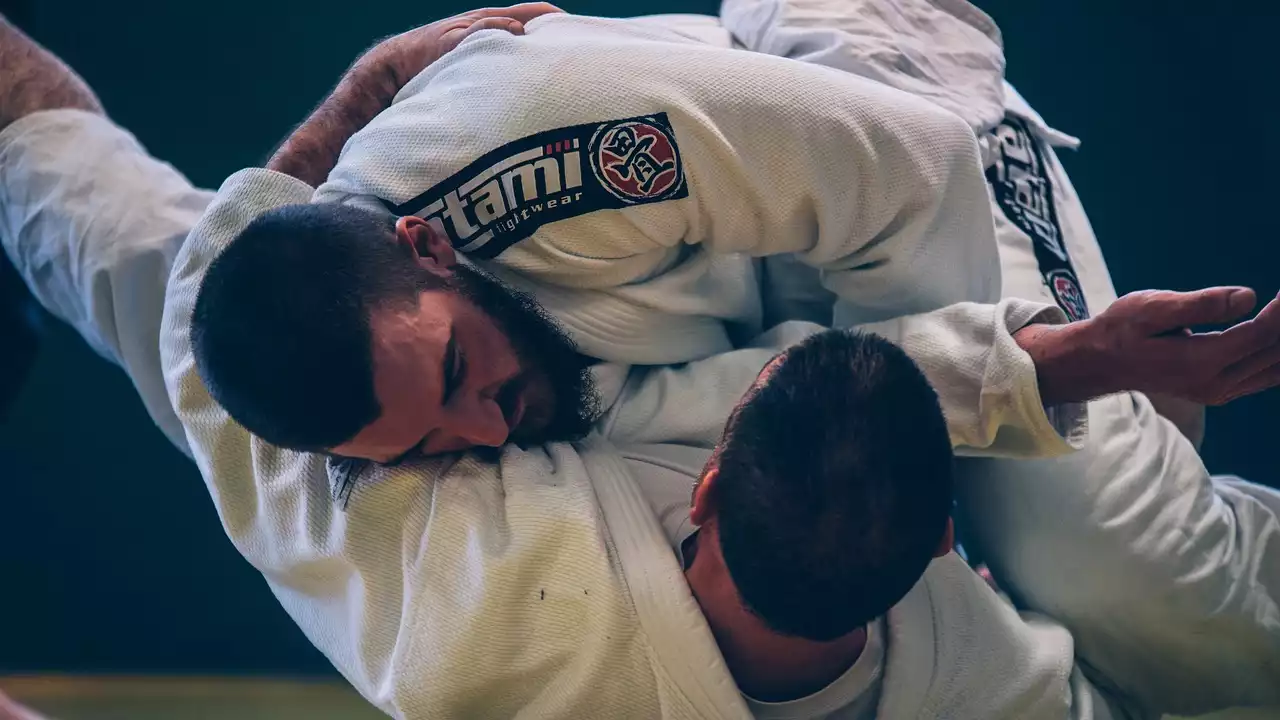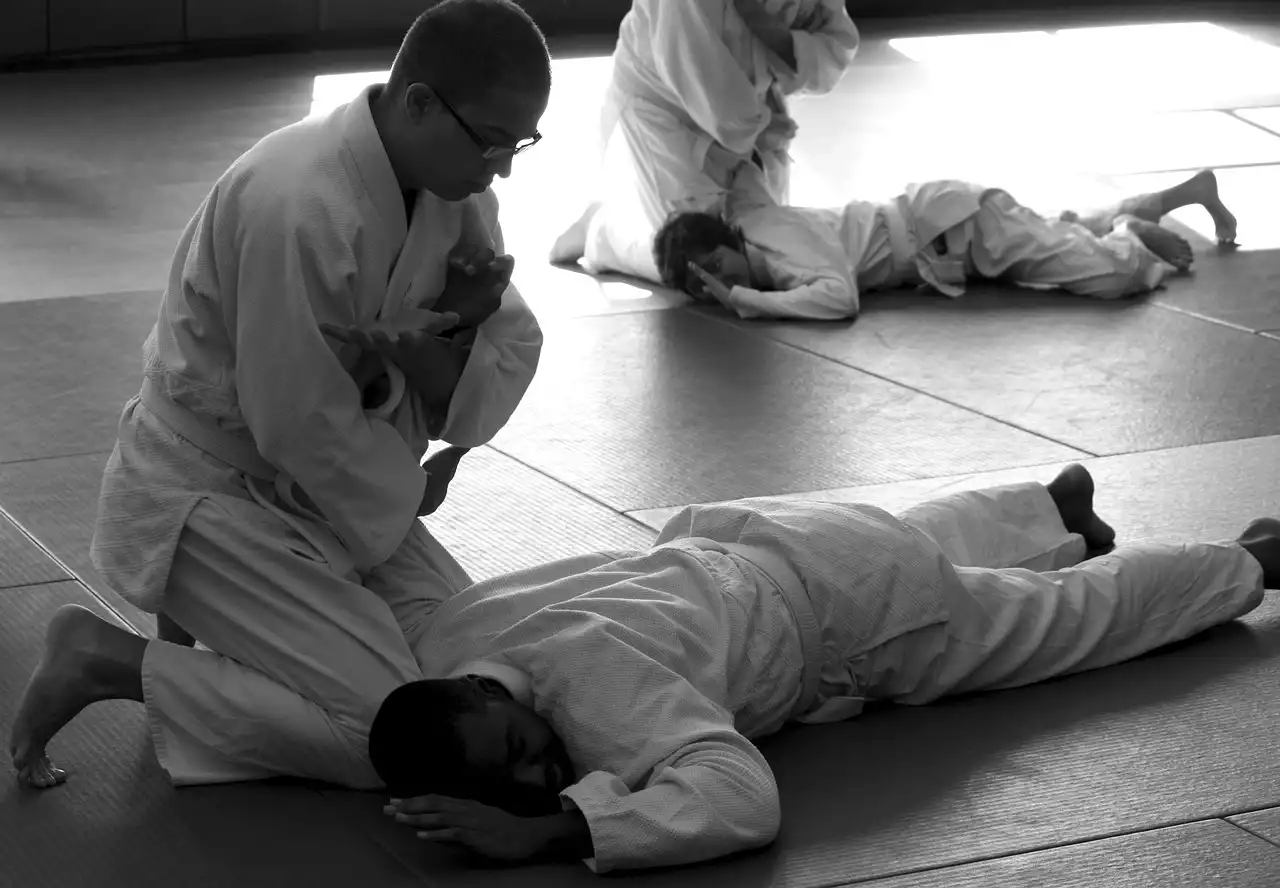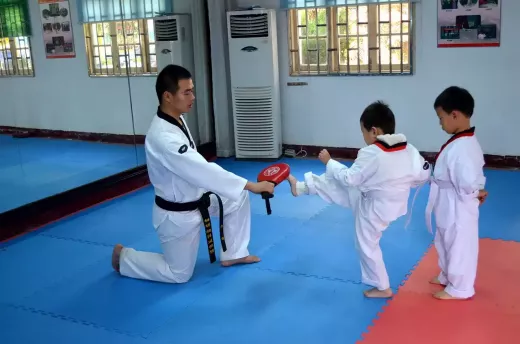Judo Scoring System
In Judo, there are two ways to score points: ippon and waza-ari.
An ippon is the highest score that can be awarded and is given when a technique is executed perfectly, resulting in a throw that lands the opponent on their back with full force and control. A waza-ari is awarded when a throw is not executed perfectly but still results in the opponent being thrown onto their back with force and control. Two waza-aris equal an ippon and a combination of waza-ari and yuko can also lead to an ippon.
In addition to throws, points can also be scored through submissions. A submission occurs when an opponent is forced to tap out or verbally submit due to a joint lock or chokehold. This results in an ippon victory for the person executing the submission.
Basic Judo Techniques Judo involves a variety of throwing techniques, grappling techniques, and striking techniques. The most common throwing technique is the hip throw or "ogoshi" in Japanese. This involves using your hip to lift and throw your opponent to the ground. Other common throwing techniques include the shoulder throw, foot sweep, and leg throw.
Grappling techniques, or "ne-waza" in Japanese, involve controlling and immobilizing your opponent on the ground. The most common grappling technique is the armlock, which involves hyperextending your opponent's elbow joint. Chokeholds, or "shime-waza" in Japanese, involves using your arms or legs to cut off your opponent's blood supply or airway, forcing them to submit.
The 6 ways to score an Ippon
Forbidden Judo Techniques
While Judo emphasizes safety and control, certain techniques are forbidden in competition.
These include all techniques that target the small joints of the fingers and toes, as well as techniques that involve striking or punching. Hair grabbing, eye gouging, and biting are also strictly forbidden.
Judo Rules for Competitions Judo competitions can take place on a local, national, or international level. The rules for each competition may vary slightly, but certain universal rules apply to all Judo competitions. Competitors must wear a white or blue Judo gi, or uniform, and must bow to their opponent before and after each match. Matches are typically three to five minutes long, and the winner is determined by the number of points scored or by submission.
In addition to the basic rules of Judo, there are also specific rules for how certain techniques can be executed during competition. For example, a throw must be executed with control and not result in the opponent landing on their head or neck. If this occurs, the throw will be considered illegal, and the person executing the throw will be disqualified.
Lost Techniques of Judo (Banned throws)
Judo Safety Rules
Safety is of utmost importance in Judo, and several safety rules must be followed during training and competition.
When practicing throws or grappling techniques, it's important to always start slowly and with control. If a technique is not executed properly, it can result in injury to both the person executing the technique and the opponent.
Additionally, it's important to always wear the proper safety equipment, such as a mouthguard and ear guards, and to make sure that the Judo mat is clean and free of debris. If an injury occurs during a match, the referee has the authority to stop the match and call for medical attention.
Judo Etiquette
Judo has a strong emphasis on respect for others and proper etiquette.
When entering or leaving the mat, it's important to bow to show respect for the sport and your opponent. During a match, it's important to maintain a calm and focused demeanor and to always follow the instructions of the referee.
After a match, it's customary to bow to your opponent and show respect for their efforts. Judo also emphasizes humility and self-discipline, and it's important to always strive to improve your skills and respect the skills of others.
Judo Belts and Rankings
In Judo, belts are used to signify a person's level of skill and experience.
Beginners typically start with a white belt and progress to higher belts as they gain more experience and knowledge. The highest belt level in Judo is the black belt, which signifies mastery of the art.
In addition to belts, Judo also has a ranking system based on competition results. Competitors earn points for winning matches and can progress to higher ranks based on their point total. The highest rank in Judo is 10th dan, which is reserved for only the most skilled and experienced practitioners.
Judo Rules and Regulations for Referees
Referees play a crucial role in ensuring the safety and fairness of Judo competitions.
They are responsible for enforcing the rules of the sport and making sure that all competitors are following proper technique and etiquette.
Referees must undergo extensive training and testing to become certified, and they must also stay up-to-date on the latest rules and regulations. During a match, the referee has the authority to stop the match if they feel that a competitor is in danger or if the rules are being violated.
Judo is a martial art that emphasizes physical fitness, self-discipline, and respect for others. Before stepping onto the mat, it's important to understand the basic rules and regulations of the sport. From the scoring system to the different techniques, Judo has a unique set of rules and guidelines that must be followed for safety and fairness. By following these rules and practicing proper etiquette, you can become a skilled and respected practitioner of this exciting and dynamic martial art.
